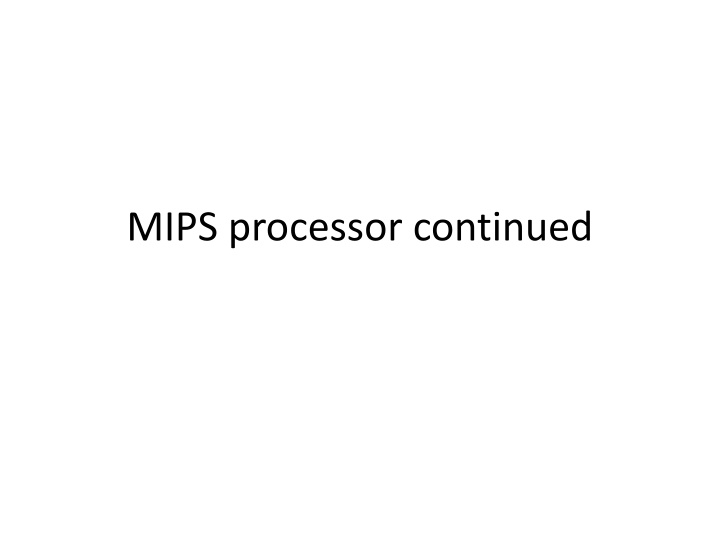
Implementing Data Path for MIPS Processor - JAL and R-Type Support
Explore the implementation of the datapath for a processor supporting JAL and R-type instructions, including details on control signals, register operations, memory access, and control line settings.
Download Presentation

Please find below an Image/Link to download the presentation.
The content on the website is provided AS IS for your information and personal use only. It may not be sold, licensed, or shared on other websites without obtaining consent from the author. If you encounter any issues during the download, it is possible that the publisher has removed the file from their server.
You are allowed to download the files provided on this website for personal or commercial use, subject to the condition that they are used lawfully. All files are the property of their respective owners.
The content on the website is provided AS IS for your information and personal use only. It may not be sold, licensed, or shared on other websites without obtaining consent from the author.
E N D
Presentation Transcript
Question How to implement the datapath of a processor supporting jal and R type?
Control Signals Control signals include ALUCtrl and the signals to control the 2-1 selectors They are generated according to the current instruction, using the opcode [31-27] and the funct [5-0] field in the instruction.
Datapath for Memory, R-type and Branch Instructions, plus the control signals
The Effect of Control Signals Signal name Effect when deasserted Effect when asserted The register destination number for the Write register comes the rt field (20:16) The register destination number for the Write register comes the rd field (15:11) RegDst None. The register on the Write register input is written with the value on the Write data input. RegWrite The second ALU operand comes from the second register file output The second ALU operand is the sign-extended, lower 16 bits of the instruction ALUSrc The PC is replaced by the output of the adder that computes the value of PC + 4 The PC is replaced by the output of the adder that computes the branch target PCSrc None. Data memory contents designated by the address input are out on the Read data output. MemRead None. Data memory contents designated by the address input are replaced by the value on the Write data input. MemWrite The value fed to the register Write data input comes from the ALU The value fed to the register Write data input comes from the data memory MemtoReg 6
Table for Control Line Setting Note: Branch is anded with ALU zero output to produce PCSrc Instruction RegDst ALUSrc Memto- Reg Reg Write Mem Read Mem Write Branch ALUOp1 ALUOp0 R-format Lw Sw beq
Table for Control Line Setting Instruction RegDst ALUSrc Memto- Reg Reg Write Mem Read Mem Write Branch ALUOp1 ALUOp0 R-format 1 0 0 1 0 0 0 1 0 lw 0 1 1 1 1 0 0 0 0 sw X 1 X 0 0 1 0 0 0 beq X 0 X 0 0 0 1 0 1 8
Implementation Using PLA R sw lw beq The way to read this -- There are only 4 possible combination of inputs 10
ALU Control Use Opcode to get ALUOp, then combine ALUOp with Funct Two levels of decoding, more efficient Assume ALUOp has been determined as such for each instruction 11/15/2007 5:02:13 PM week-13-3.ppt 12
One Implementation ALU control bit 3 is always 0 for this set of instructions Can verify that the output is correct for lw, sw, beq For R-type, op2=F1, op1= ~F2, op0 = F3 | F0 13
